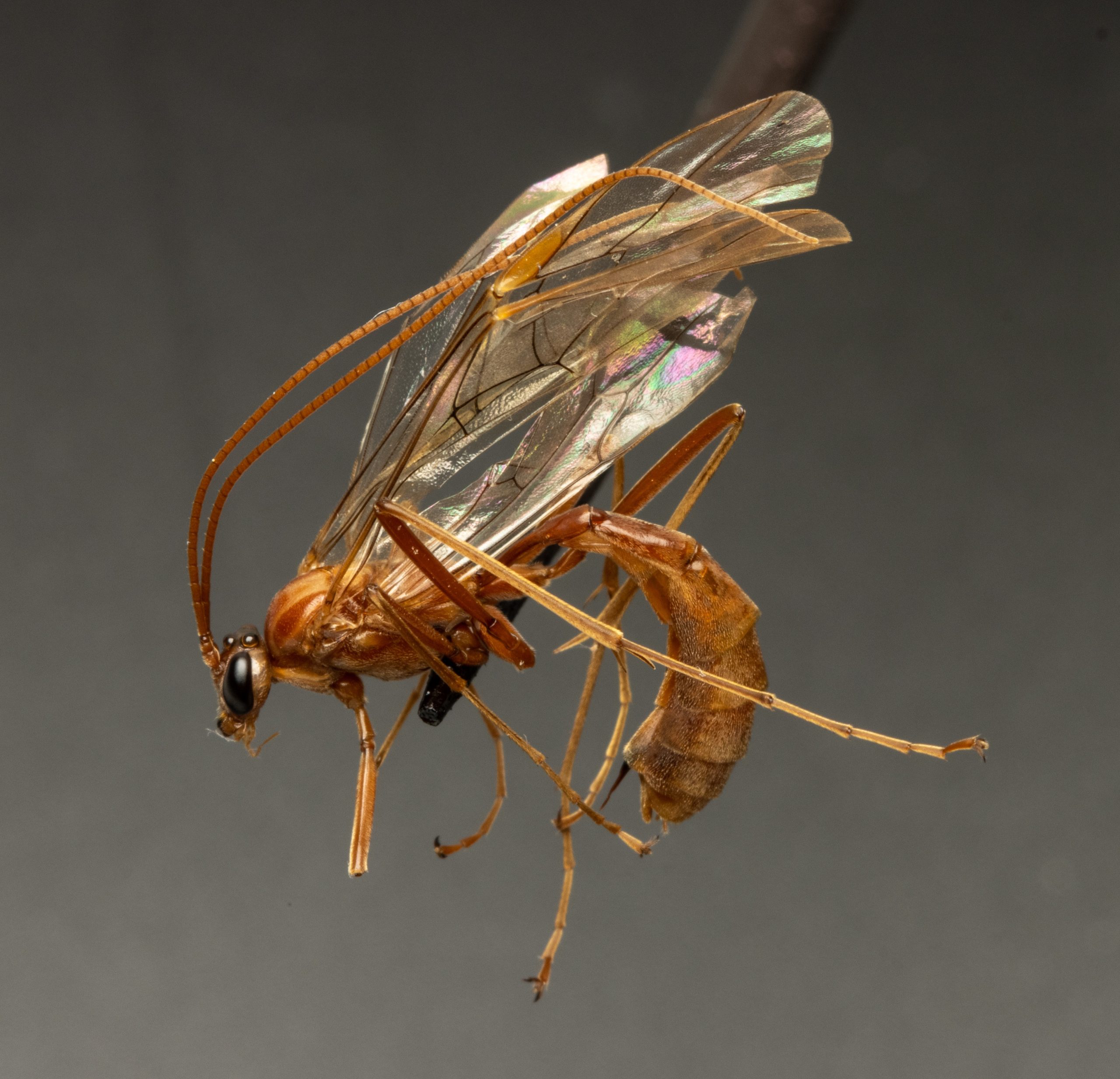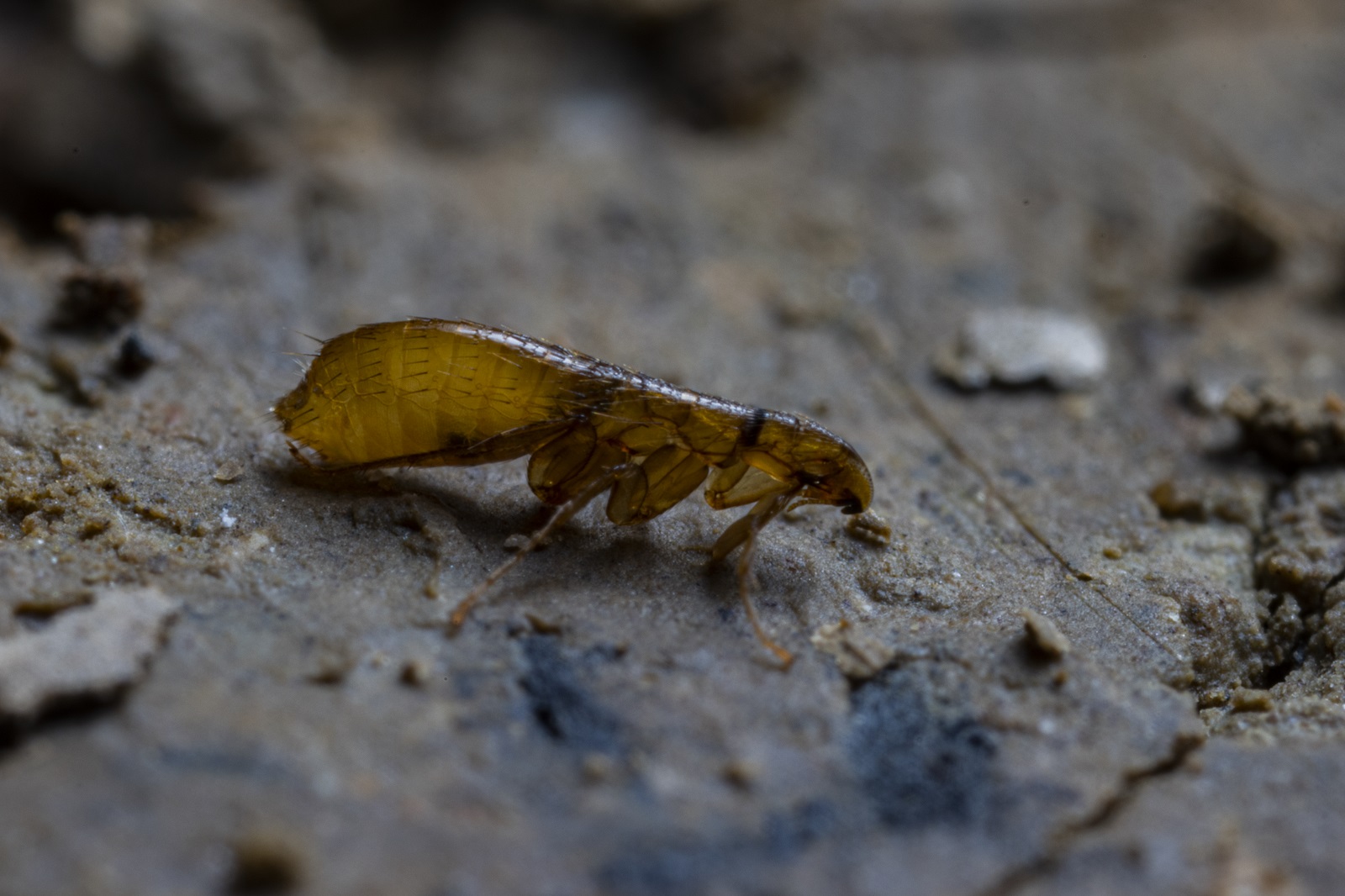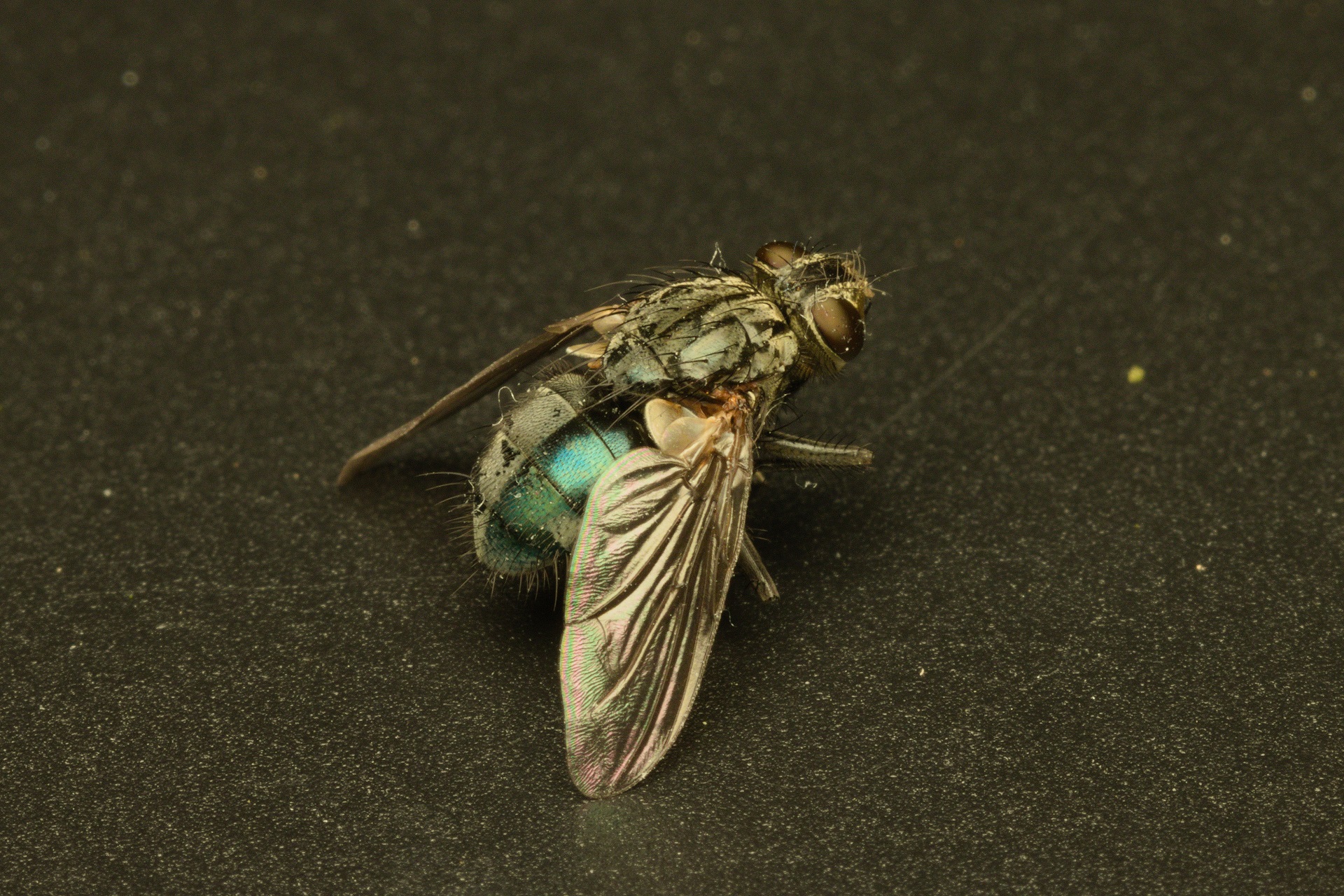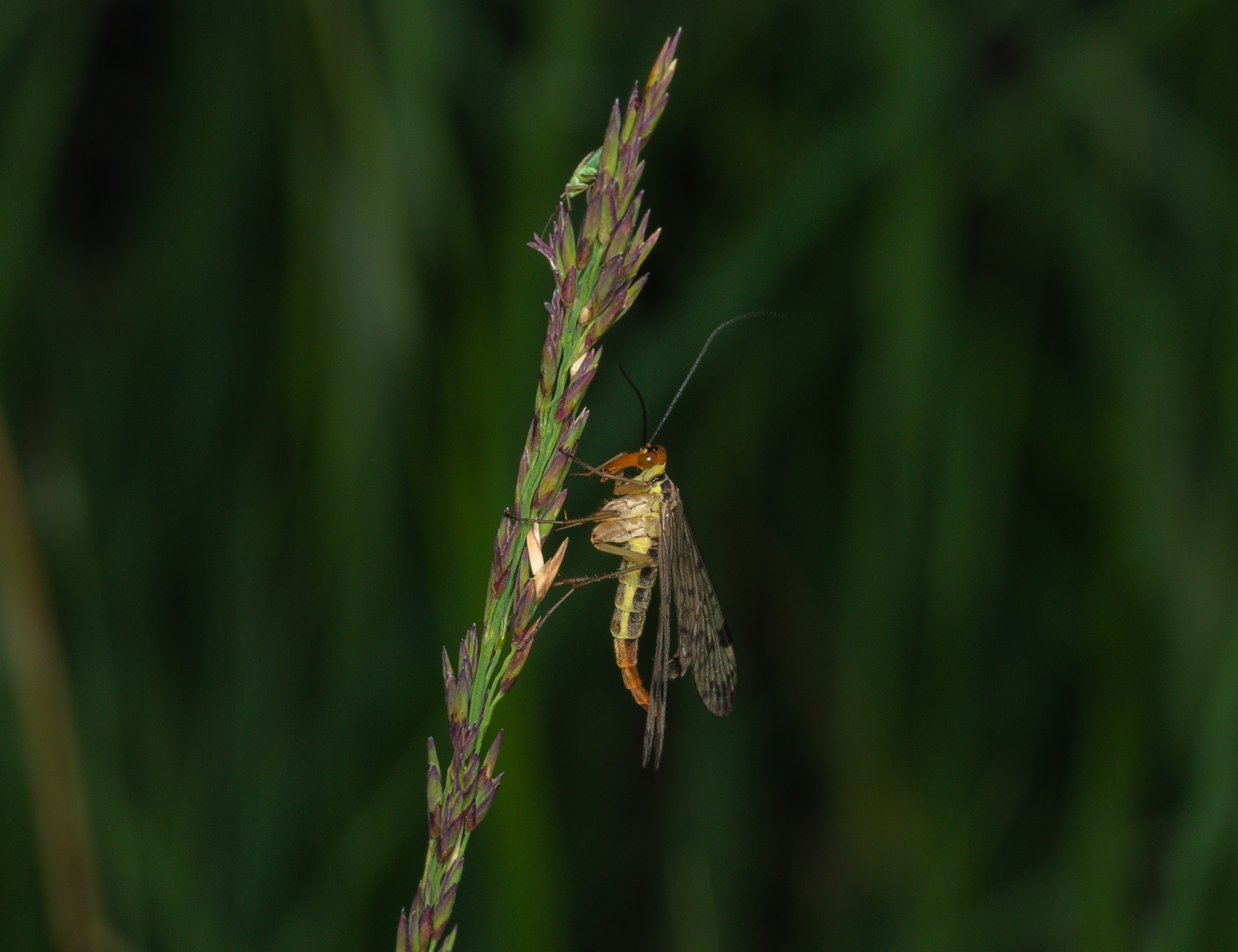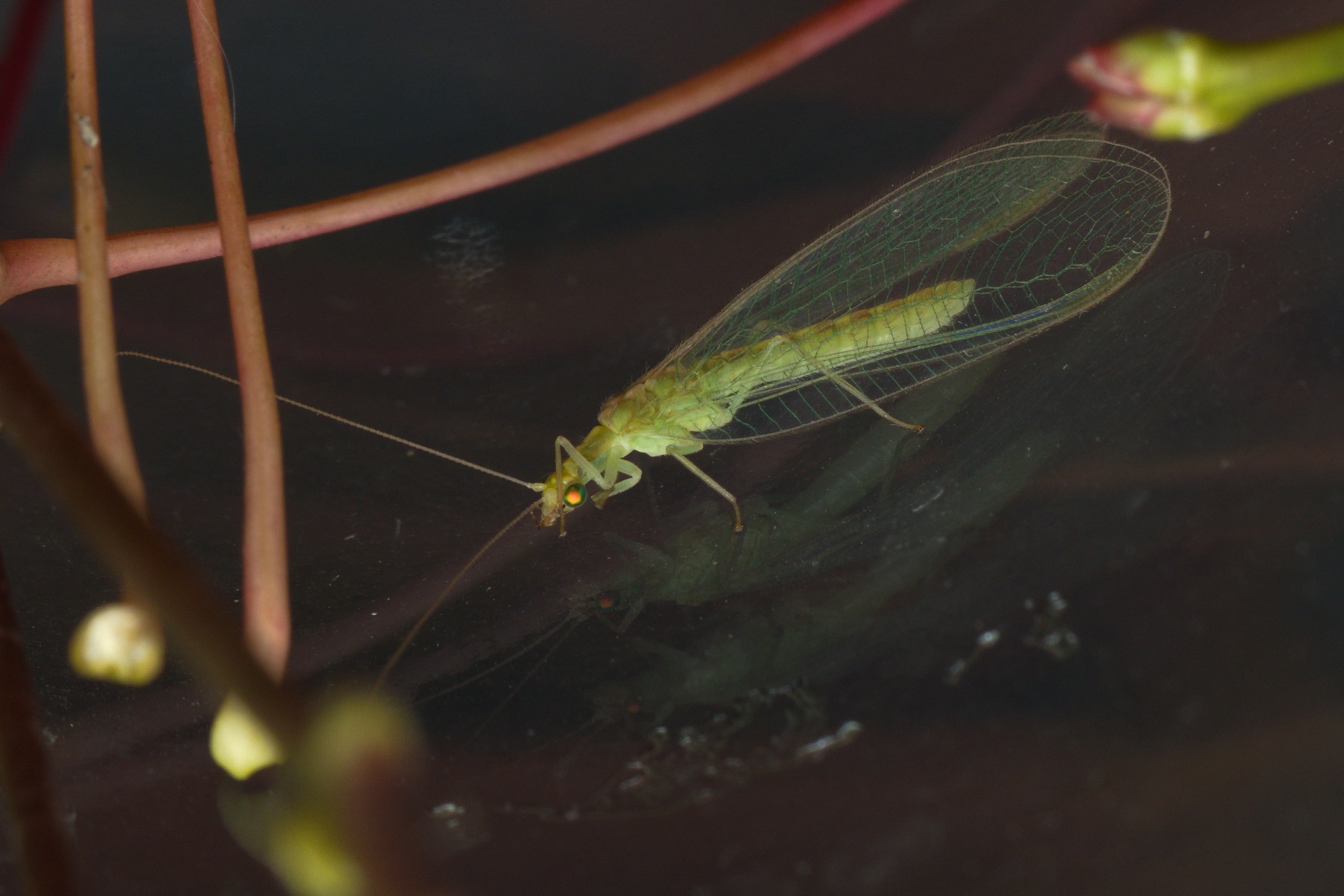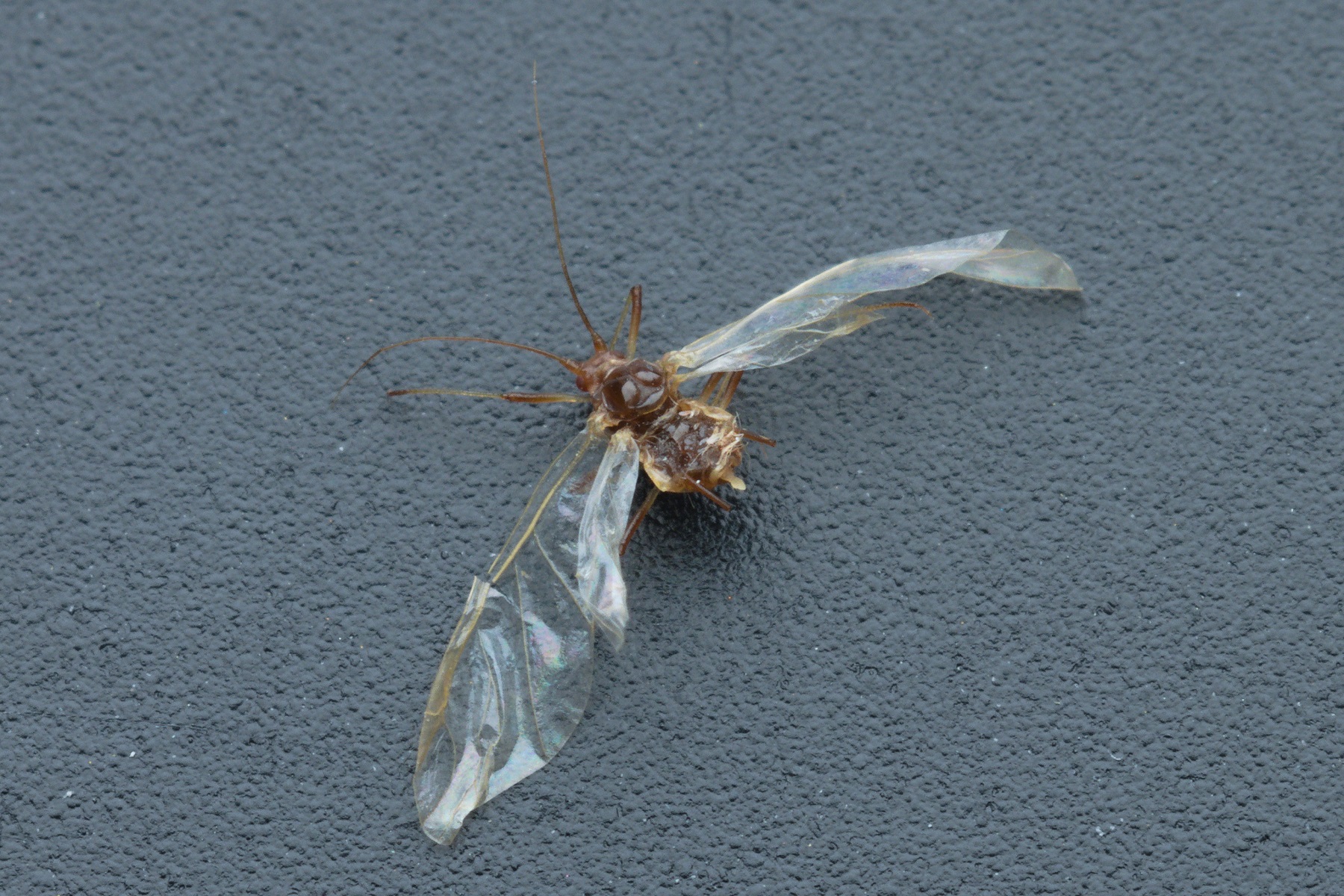Formicidae
Description
Ants are a family (fam. Formicidae) of narrow-waisted stinging wasps within the order Hymenoptera. The head is prognathous, with strong multifunctional mandibles involved in feeding and food transport, defence and object manipulation. The antennae are elbowed – there is a clear bend between the elongated first segment (scape) and the other segments that form the funiculus. In most of our species, the antennae are 11- or 12-segmented. The first segment of the abdomen, called the propodeum, is fused with the three segments of the thorax and together they form a body region called the mesosoma, which has three pairs of legs. Workers are wingless, males and young queens of most species are winged, with two pairs of wings typical of hymenopterans. After mating, the queens shed their wings. At the end of the mesosoma, above the metacoxa, is the characteristic metapleural gland (secondarily lost in some species), which is usually visible externally as a bulge with an orifice. The mesosoma is followed by a waist consisting of one segment (petiole = reduced 2nd abdominal segment) or two segments (petiole and postpetiole = reduced 3rd abdominal segment). The posterior body region is the gaster, which consists of the remaining abdominal segments. Most groups (subfamilies) of ants have a stinger with an opening of the poison gland, but in some the stinger is reduced.
Biology
All ants are eusocial insects. They live in communities called colonies, which are perennial in ants. Colonies consist of workers (sterile females), one or more queens (fertile females) and brood (eggs, larvae, pupae). One of the characteristics of eusocial life is the division of labour within the colony – the queens are responsible for reproduction and the workers for all other tasks. There is also a division of labour between the workers, and in some species there is a clear physical distinction between the workers within the colony (worker polymorphism). During part of the season, the colony also develops young virgin queens and haploid males, which after a certain time fly out of the nests and mate. In most species, the queens find a suitable site on their own and start laying eggs, thus founding a new colony. In some species, after mating the queens either join an existing colony or split off from the mother colony with part of the workers. Many ant species from temperate regions are socially parasitic – one ant species parasitizes another ant species, either during the colony founding stage or its entire life cycle. In some parasitic species, only the reproductive individuals (queens and males) are developed.
Ants are found in virtually all terrestrial habitats and in some places make up a large part of the animal biomass. Ant nests are found in a wide variety of places: in the ground (often under stones), in fallen wood on the ground, in various parts of living trees, in rock crevices, and they can colonise human dwellings. There are more than 14,000 known ant species in the world, with highest number of species in the tropics, and in Slovenia there are just over 150 species.
Most species are omnivorous. They can prey on other invertebrates or feed as scavengers. They often obtain plant-based food through symbiotic relationship with homopterans (aphids, scale insects), from which they obtain sweet plant sap that is sucked up by the homopterans, and in return for the food the ants protect them from predators.
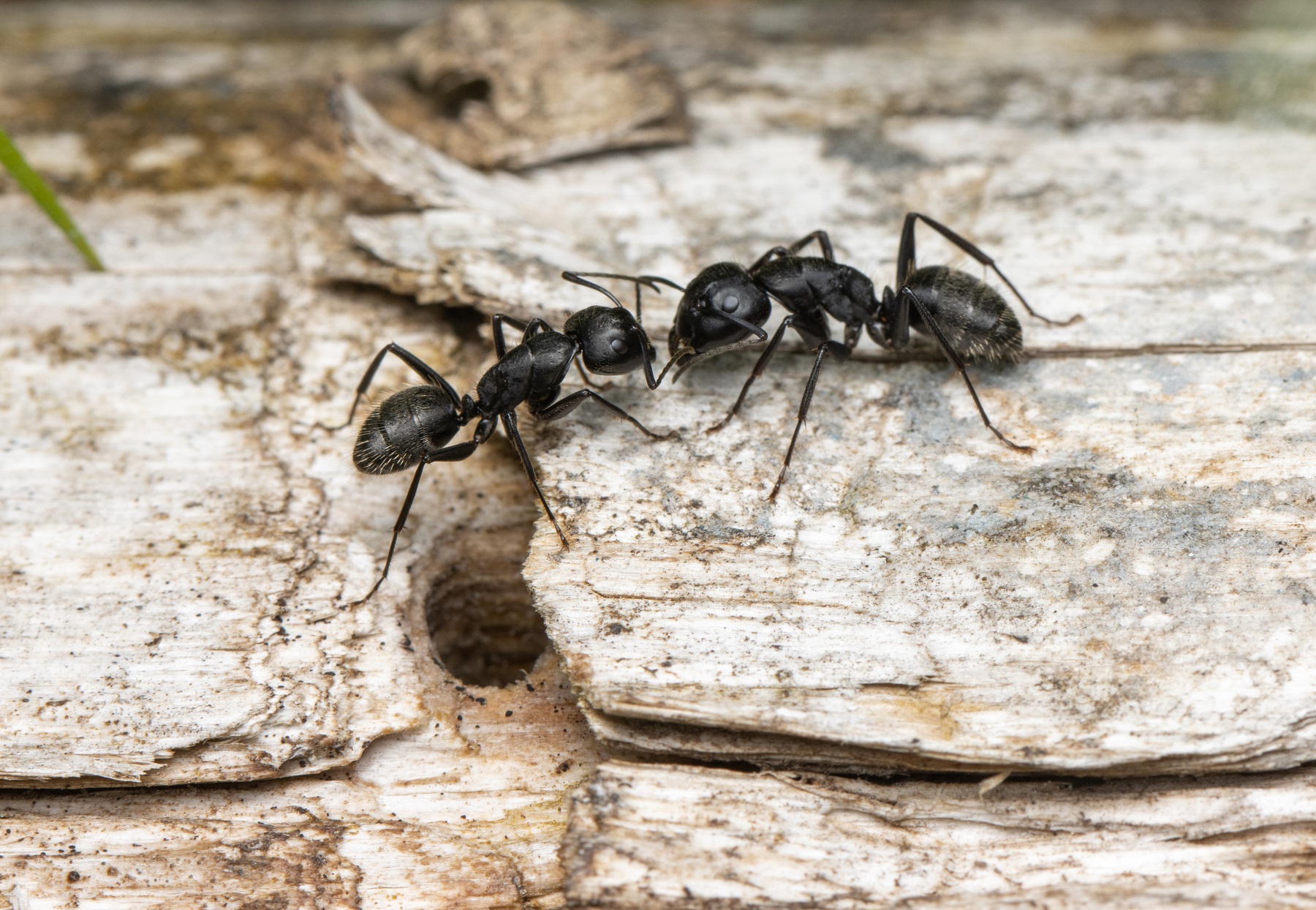
Sorodni členonožci

Authors
- Urban Bogataj,
- Gregor Bračko,
- Teo Delič,
- Cene Fišer,
- Žiga Fišer,
- Rok Kostanjšek,
- Rudi Verovnik,
- Miloš Vittori,
- Valerija Zakšek.
Students Vito Ham, Vesna Jurjevič, Gaj Kušar, and Adrijan Samuel Stell Pičman also participated in the project.
